 Today, we bring the open water swimming spotlight to Gerry Rodrigues, a former age-group and collegiate pool swimmer who has found his niche in short-distance ocean races.
Today, we bring the open water swimming spotlight to Gerry Rodrigues, a former age-group and collegiate pool swimmer who has found his niche in short-distance ocean races. "Gerry wins by his wits," said Dana Totten of the Olympic Club. "He knows how to position himself. I’ve seen him beat guys he has no business beating."
He also made a best-selling video called Open Water Swimming – Skills, Techniques & Racing Tips.
Gerry Rodrigues has won hundreds of ocean and lake races throughout California including swims in Lake Berryessa, Lake Sonoma, Santa Cruz, Manhattan Beach, La Jolla, Seal Beach, Oceanside, San Clemente, Huntington Beach, Malibu, Ventura, Solano Beach, Dana Point, Newport Beach, Santa Monica, Will Rogers State Beach, Santa Barbara, San Luis Obispo and dozens of Bud Light Ocean Festival Series races, as well as two Masters World Championship races, so we figure that he knows what he is talking about.
We asked Gerry the following questions about warming up for open water races.
Q1. How do you warm-up for open water swims?
 I always warm-up in a pool first, if it's available. I like to be really well warmed-up since the pace is soooo fast in the beginning. In the pool, it is possible I swim 3-4 kilometers or more, or until I feel completely warmed up. The distance does not matter; what matters is the feel. I like to feel completely ready.
I always warm-up in a pool first, if it's available. I like to be really well warmed-up since the pace is soooo fast in the beginning. In the pool, it is possible I swim 3-4 kilometers or more, or until I feel completely warmed up. The distance does not matter; what matters is the feel. I like to feel completely ready. If no pool is available then I obviously warm-up at the open water competition site. In that case, the warm-up is for as long as it takes to get warmed up. I always swim the finish line numerous times because it is the most important part. I check on the many variables that are important at the end of a race.
 For example, I check the gradient of the ocean bottom, the ocean floor composition, how may dolphins it might take before I start to run [up the beach to the finish], is one side steeper than the other, the distance to shoot for if it is a land finish, the distance from last buoy to finish pad if it is an in-the-water finish and the width of finish chute.
For example, I check the gradient of the ocean bottom, the ocean floor composition, how may dolphins it might take before I start to run [up the beach to the finish], is one side steeper than the other, the distance to shoot for if it is a land finish, the distance from last buoy to finish pad if it is an in-the-water finish and the width of finish chute.I mentally note how many swimmers can be accommodated in the chute width, the currents at finish. During the warm-up, I check all these variables and am completely prepared for any scenario. For me, all my races generally come down to the finish because I am not fast enough to break away from the pack. So knowing these kinds of details are my arsenal.
2. Do you do anything different when the water is cold?
Yes, I spend less time in the water and more time on land for my warm-up. For me, water temperatures below 65°F (18°C) are not enjoyable, especially when it gets down below 62°F (16°C). The colder the water was, the less in-the-water warm-up I do, unless I had a wetsuit.
My routine is straightforward with water temperatures between 60-64°F (15-17°C): I stretch, go for a 15-25 minute run to get my core temperature up, enter the water slowly to waist height and then splash water on my face and head to get rid of ice-cream headache from the cold. Once I get rid of the headache, then I do a warm-up swim whose length depends on if I have a wetsuit or not. At times, I bring a wetsuit so I can stay in for a longer swim warm-up if I know ahead of time that the setting does not lend itself to an opportunity for much running. I never stay in too long to get cold. Then I exit the water and go for another short run with a sweat shirt on to get my core temperature really warm......then I'm ready to race.
Q3. Do you do anything different when the water is really warm?
Warm water saps energy really fast, especially when the ocean is warm. Generally I spend less time in the water warming-up because it is not needed as much since muscles tend to be more supple in warmer temperatures and it is easier to get warmed-up. I warm-up, then stay in the shade and be a slug until race time. If it is super warm and the race allows for it, I do not wear a swim cap. I also wear a very breathable swimsuit, especially if it is a full-body suit. In fact, I am uncertain if I would recommend wearing a full-body suit in a really warm water race under bright sun on a clear day, especially if the suit is black.
Q4. What do you eat on the morning of the race?
I eat the same thing I eat every morning. There is no point in changing what got me to the race on race day. I do what I practice [on race-day morning]. But, people who do not eat before they race may be depriving themselves of optimal performance. To me, breakfast is the most critical meal, so depending on the start time, I eat my regular meal, or a slightly reduced meal. Specifically, I eat cereal, eggs and fruit. Then, before the race, maybe 30-60 minutes before the start, I have some fruit again and drink water and Gatorade. I vary what and when I eat depends on start time and race distance.
Q5. Do you warm-down?
Only if I have another race immediately after because I usually want to just hang around and talk with others.
Q6. Do you hydrate before the race?
I usually always drink water and Gatorade. I have found after years of racing and training that dehydration affects me more than if I did not eat or eat correctly. So I tend to make sure I am well hydrated, but not overly so. It takes time to learn the right balance. I don't change things on race day if I was not practicing them prior.
Q7. Where should you position yourself at the race start?
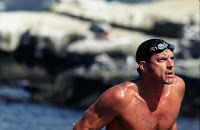 Great question as it depends on so many variables: who is in the field? is there surf? are there currents? am I going to be chased or I am I doing the chasing? are there a lot of huge guys in the field who can clear the way for me? There are just so many variables that it all depends. If possible, staying clear of contact is helpful.
Great question as it depends on so many variables: who is in the field? is there surf? are there currents? am I going to be chased or I am I doing the chasing? are there a lot of huge guys in the field who can clear the way for me? There are just so many variables that it all depends. If possible, staying clear of contact is helpful. Many have said to me, 'Gerry, you have it easy at the front because you don't get clobbered as much as us in mid-pack or in the back.' My response is always the same: 'I would prefer to get clobbered by those swimming at 1:20 to 2:00 minute per 100 speed than those swimming a minute per hundred speed. We may get clobbered less, but it is a lot harder hit. Would you prefer to crash your car at 30 or 60 mph?
In writing my book on open water swimming, I calculated there are approximately 16 million possibilities that can occur at the start of a race; so experience is a very important element in racing and placement at starts; that is, if you have the choice on where to start since some race starts are assigned.
Q8. Any other words of advice?
To those who believe it is not necessary to train in open water, and prepare for those variables, then you have unfortunately reduced your chances for success [in open water races], while increasing your exposure to risk. Open water racing is and will become more tactical as the racing fields become more competitive, and without the arsenal acquired from experience, those without specific experience will unfortunately encounter greater challenges.
10Kswimmer Observation: Gerry Rodrigues, a short-distance open water specialist (i.e., under 5K), has developed a pre-race routine commonly used by world professional marathon swimming champions like German Thomas Lurz, Russian Larisa Ilchenko, Italian Valerio Cleri and American Chip Peterson. We have observed the very best pro open water swimmers warm-up in a pool - even if it is a small hotel pool before they head over to the open water venue - and they can be seen carefully taking into account many of the small variables at the finish in their pre-race warm-up.



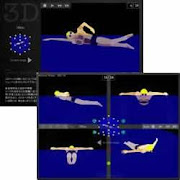




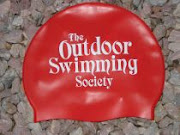

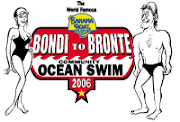


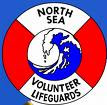
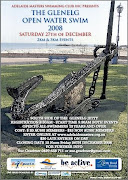





8 comments:
great interview. thanks for sharing.
Gerry is one of the most serious, observant and thoughtful open water swimming competitors and coaches we know. He has carefully studied, observed and competed in hundreds of races - and has always prepared himself physiologically and psychologically to be in a position to win. Learning from him can only help others, we strongly believe.
This is AWESOME!
Thanks to both of you, we just may see some much faster OW swimming this season!
Very interesting. I swim much better after a good warm-up and on a second swim if there are more than one in a day (e.g. masters competitions or open water relays). If I don't warm up sufficiently I swim slower and find it very difficult to change pace.
I'm currently trying to work out how to warm up for a channel solo as there is just the one swim and I need to balance minimising energy expelled (as I'll probably need it later) with the need to set the right pace from the start.
Any tips for very long distance events?
Gerry's advice is spot on and very helpful. I recommend his DVD and use many of the tips in there when I hold my OW clinics.
Sometimes, there is no place to warm up before a swim, or you may not be permitted to jump in until the last minute (the Hudson River is an example). This is when stretching and some gentle exercise on the land is important. I find that any running before my swim results in painful leg cramps during my race, but that's just me. And if you're wearing a wetsuit and just can't get warm in chilly water, why not pee in your wetsuit? It worked for the early astronauts LOL!
Emma,
Two-time CHannel swimmer here. I'd get linked up to the channel swimming goggle group ASAP to start getting some ideas- it's a great resource for training ideas and plans for the unique conditions for the Channel. go to www.channelswimming.net and send in an e-mail
Emma,
My own practical experience is divided how to warm-up for a long-distance swim (i.e., over 25K). In general, I did a lot of stretching and hydrating and only got in the water for a very short spell (25-50 meters), especially when the water was cold or it was an unprecedented swim (when I did not know if I could even make it). As you suggest, I wanted to save all my energy for the point in the solo swim when I knew the tides could switch on me or the wind would cause great surface chop. On the other hand, I once did a swim across the Tsugaru Channel when I knew I had to swim at least at a 4 kilometer per hour pace for the first 2 hours in order to get pass the first tough part of the swim. For this swim, I did a relatively long warm-up of 20 minutes, even though the double-crossing took me nearly 13 hours. However, if I had not done a good warm-up, I would not have been prepared for the toughest part of the swim which was the first 2 hours. However, in the English Channel, the toughest part is not in the beginning, so I recommend that you follow CHEWWOOK's advice and read up on what hundreds of other Channel swimmers do and have done. You will find their advice is invaluable, especially when you read about a person of your approximate speed and experience and learn from their successes and failures. Good luck. Please keep us informed of your experience in the Channel - and how you eventually chose to warm-up.
I've known Gerry for years,in fact, we swam together in Trinidad as kids; he was known as Gerard then. No one swam like he did in open water; he just knew it like no one else. It's not surprising he's the expert. He was always tactical about racing. Congrats on your success G
Richard
Post a Comment